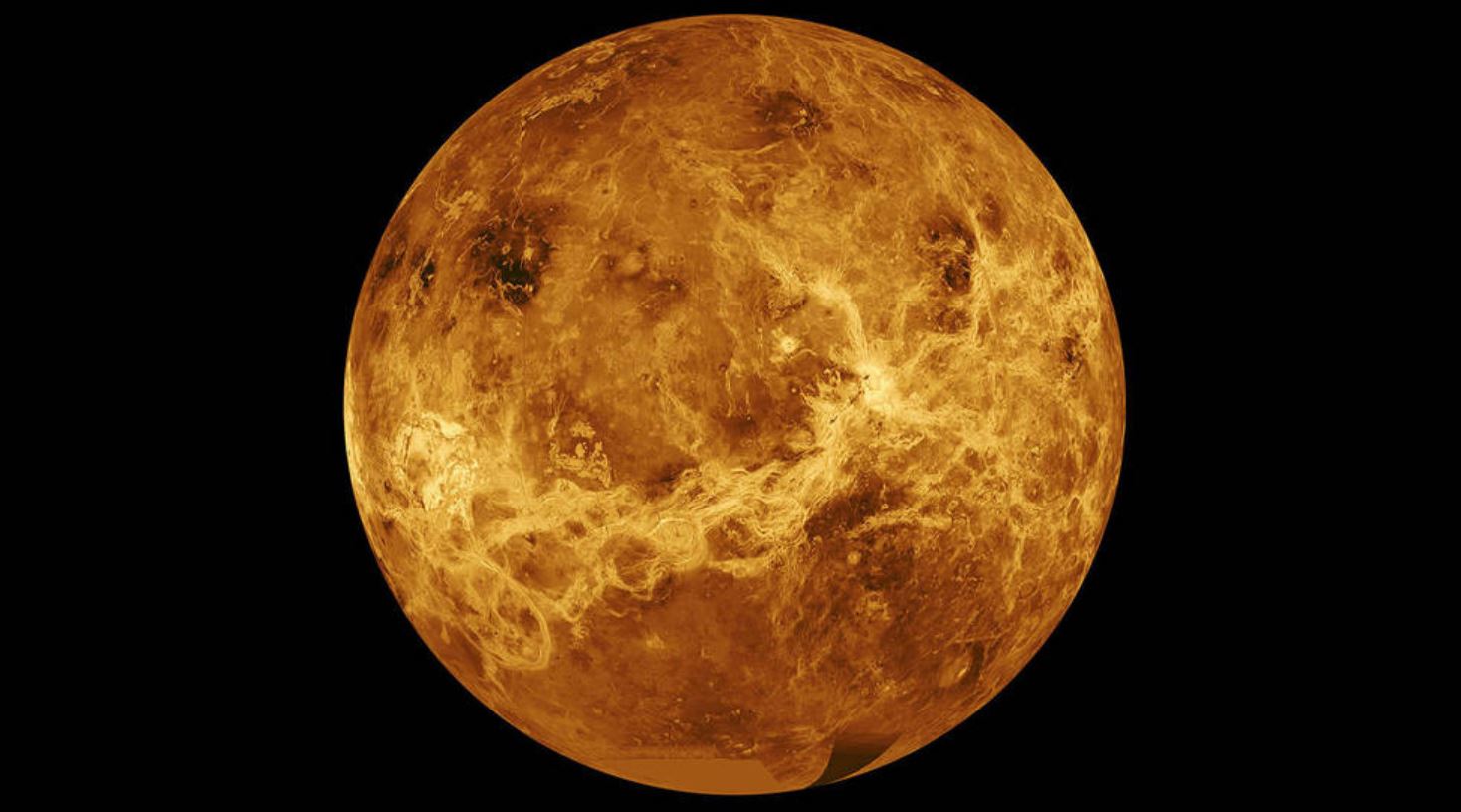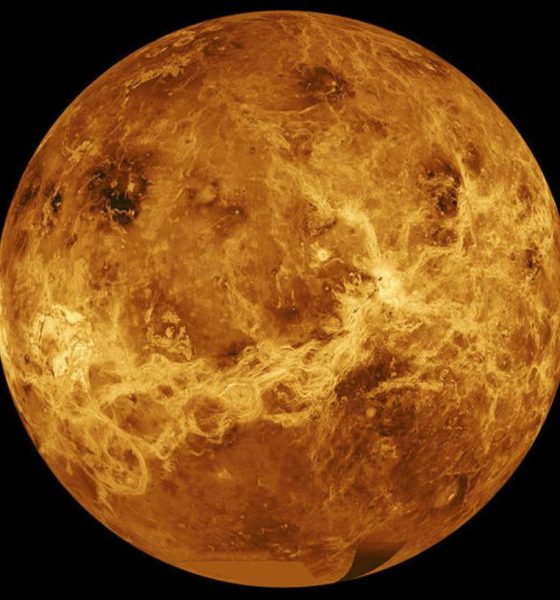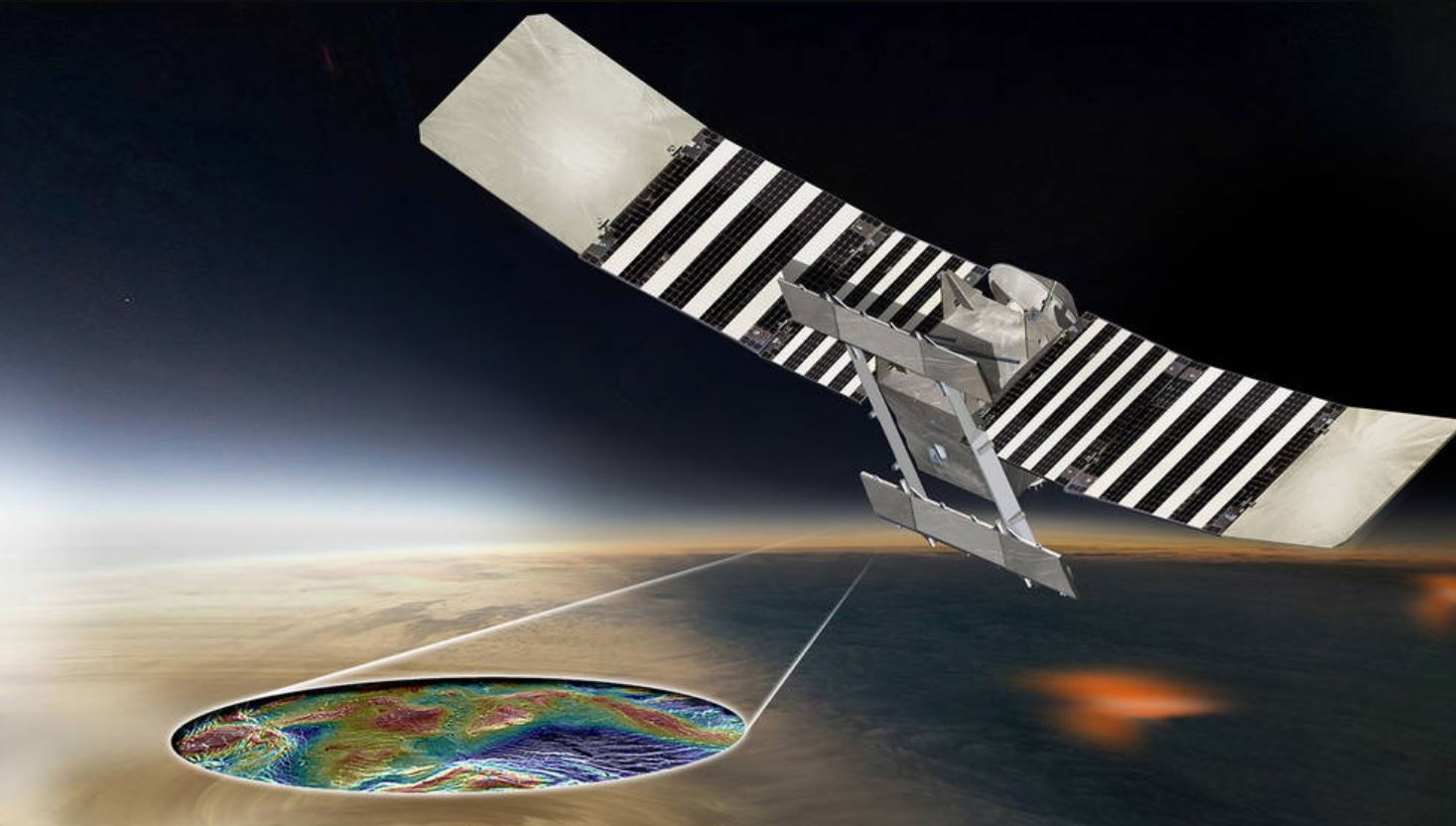

News
Mars has competition from Venus after new study shows signs of life
NASA and SpaceX are simultaneously planning their trips to Mars and the Moon, but a recent study published in Nature Astronomy has brought a different planet into the running for a new near-term exploration mission: Venus.
A team of scientists led by Dr. Jane Graeves of Cardiff University in the UK just announced the discovery of phosphine in the clouds of Venus. This rare molecule is made either industrially or as a byproduct of microbes that live in oxygen-free environments, meaning there’s serious evidence that life may exist on our sister planet.
“This was an experiment made out of pure curiosity, really,” Dr. Graeves detailed to the Royal Astronomical Society. “I thought we’d just be able to rule out extreme scenarios, like the clouds being stuffed full of organisms. When we got the first hints of phosphine in Venus’ spectrum, it was a shock!”
With NASA’s 2020 Mars Rover Perseverance on its way to do some astrobiological science on our red neighbor, this new finding on Venus looks to now have some high-level advocates for prioritized exploration.
“Life on Venus? The discovery of phosphine, a byproduct of anaerobic biology, is the most significant development yet in building the case for life off Earth,” NASA Administrator Jim Bridenstine tweeted about the news shortly after its publication. “About 10 years ago NASA discovered microbial life at 120,000ft in Earth’s upper atmosphere. It’s time to prioritize Venus.”
https://twitter.com/JimBridenstine/status/1305598182571810822
Planetary scientist Paul Byrne of North Carolina State University echoed this same sentiment in a quote published by The New York Times. “If this planet is active and is producing phosphine, and there is something that’s making it in the Venus atmosphere, then by God almighty, forget this Mars nonsense,” Byrne opined. “We need a lander, an orbiter, we need a program.”
Similar to thinking about Mars’ ancient past being filled with more Earth-like components such as water bodies (or perhaps not), Venus is thought to have been the home to lakes, rivers, and oceans before a runaway greenhouse effect made it into the hellish landscape it is today. This thinking has partly lead to speculation about the possibility of microbes migrating or developing in the clouds of the planet as ‘aerial’ life where temperatures are much more Earth-like, albeit very acidic. “Finding phosphine on Venus was an unexpected bonus! The discovery raises many questions, such as how any organisms could survive. On Earth, some microbes can cope with up to about 5% of acid in their environment – but the clouds of Venus are almost entirely made of acid,” commented team member Dr. Clara Sousa Silva of MIT.

For planetary science enthusiasts, of course, the idea of looking for life or even a new home for humans in the clouds of Venus isn’t new. Astrobiologist David Grinspoon, for one, has been advocating for the planet’s cause for quite some time. “Venus, this planet where I’ve been proposing for decades that there could be a biosphere in the clouds,” he exclaimed in a recent video chat about the discovery. “I mean, Venus is a place we do not associate with extraterrestrial life… It’s so hot, and so dry, the pressure’s so huge…we think life is gonna be anywhere but Venus. But interestingly if you go 30 miles up into the clouds, it’s rather comfortable in the sense that it’s sort of like room temperature [and pressure] in the room you’re in right now.”
The discovery of phosphine on Venus is also exciting for exoplanet hunting endeavors, i.e., looking for signs of life on planets outside our solar system. “It’s very exciting because phosphine is a gas that should not exist in an atmosphere like Venus’,” Grinspoon explained. “It stands out as an anomaly… Not only that, phosphine has been previously suggested as a very good biosignature that we might find on an exoplanet – a gas that’s made by life. It’s not easy to make in non-biological ways.”
A renewed call for Venusian exploration is already ready to be answered by a few scientists and groups, one notable example being startup launch provider Rocket Lab. As a rocket company focused on dedicated missions for small payloads, Rocket Lab stands as a ready and willing partner for any organization looking to gather more data from Venus directly. In fact, CEO Peter Beck already has plans in the works for the planet most symbolically synonymous with romance.
“I’m madly in love with Venus,” Beck said on August 5th this year during a live streamed company update. “I’m working very hard to put together a private mission to go to Venus in 2023… At the very least, I think it’s a needle-mover even for just a private mission to try and go do something interplanetary. That sends a message to the rest of the world that, ‘Hey, look — we can do these things privately.’”
Another notable mission that’s relevant to Beck and Rocket Lab’s goals for small payload missions to interplanetary destinations was the Mars Cube One companions of NASA’s InSight lander launched in 2018. After traveling the the red planet with the lander, the twin cube satellites were able to send back data and a photo of Mars to Earth. This proved that tiny affordable spacecraft could be used for some serious deep-space science. Perhaps one of the biggest discoveries in our solar system of late could be followed up by an itty bitty mission (respectively)?
You can watch Dr. Jane Greaves, explain the discovery on Venus in detail:

News
Tesla FSD fleet is nearing 7 billion total miles, including 2.5 billion city miles
As can be seen on Tesla’s official FSD webpage, vehicles equipped with the system have now navigated over 6.99 billion miles.

Tesla’s Full Self-Driving (Supervised) fleet is closing in on almost 7 billion total miles driven, as per data posted by the company on its official FSD webpage.
These figures hint at the massive scale of data fueling Tesla’s rapid FSD improvements, which have been quite notable as of late.
FSD mileage milestones
As can be seen on Tesla’s official FSD webpage, vehicles equipped with the system have now navigated over 6.99 billion miles. Tesla owner and avid FSD tester Whole Mars Catalog also shared a screenshot indicating that from the nearly 7 billion miles traveled by the FSD fleet, more than 2.5 billion miles were driven inside cities.
City miles are particularly valuable for complex urban scenarios like unprotected turns, pedestrian interactions, and traffic lights. This is also the difference-maker for FSD, as only complex solutions, such as Waymo’s self-driving taxis, operate similarly on inner-city streets. And even then, incidents such as the San Francisco blackouts have proven challenging for sensor-rich vehicles like Waymos.
Tesla’s data edge
Tesla has a number of advantages in the autonomous vehicle sector, one of which is the size of its fleet and the number of vehicles training FSD on real-world roads. Tesla’s nearly 7 billion FSD miles then allow the company to roll out updates that make its vehicles behave like they are being driven by experienced drivers, even if they are operating on their own.
So notable are Tesla’s improvements to FSD that NVIDIA Director of Robotics Jim Fan, after experiencing FSD v14, noted that the system is the first AI that passes what he described as a “Physical Turing Test.”
“Despite knowing exactly how robot learning works, I still find it magical watching the steering wheel turn by itself. First it feels surreal, next it becomes routine. Then, like the smartphone, taking it away actively hurts. This is how humanity gets rewired and glued to god-like technologies,” Fan wrote in a post on X.
News
Tesla starts showing how FSD will change lives in Europe
Local officials tested the system on narrow country roads and were impressed by FSD’s smooth, human-like driving, with some calling the service a game-changer for everyday life in areas that are far from urban centers.

Tesla has launched Europe’s first public shuttle service using Full Self-Driving (Supervised) in the rural Eifelkreis Bitburg-Prüm region of Germany, demonstrating how the technology can restore independence and mobility for people who struggle with limited transport options.
Local officials tested the system on narrow country roads and were impressed by FSD’s smooth, human-like driving, with some calling the service a game-changer for everyday life in areas that are far from urban centers.
Officials see real impact on rural residents
Arzfeld Mayor Johannes Kuhl and District Administrator Andreas Kruppert personally tested the Tesla shuttle service. This allowed them to see just how well FSD navigated winding lanes and rural roads confidently. Kruppert said, “Autonomous driving sounds like science fiction to many, but we simply see here that it works totally well in rural regions too.” Kuhl, for his part, also noted that FSD “feels like a very experienced driver.”
The pilot complements the area’s “Citizen Bus” program, which provides on-demand rides for elderly residents who can no longer drive themselves. Tesla Europe shared a video of a demonstration of the service, highlighting how FSD gives people their freedom back, even in places where public transport is not as prevalent.
What the Ministry for Economic Affairs and Transport says
Rhineland-Palatinate’s Minister Daniela Schmitt supported the project, praising the collaboration that made this “first of its kind in Europe” possible. As per the ministry, the rural rollout for the service shows FSD’s potential beyond major cities, and it delivers tangible benefits like grocery runs, doctor visits, and social connections for isolated residents.
“Reliable and flexible mobility is especially vital in rural areas. With the launch of a shuttle service using self-driving vehicles (FSD supervised) by Tesla in the Eifelkreis Bitburg-Prüm, an innovative pilot project is now getting underway that complements local community bus services. It is the first project of its kind in Europe.
“The result is a real gain for rural mobility: greater accessibility, more flexibility and tangible benefits for everyday life. A strong signal for innovation, cooperation and future-oriented mobility beyond urban centers,” the ministry wrote in a LinkedIn post.
News
Tesla China quietly posts Robotaxi-related job listing
Tesla China is currently seeking a Low Voltage Electrical Engineer to work on circuit board design for the company’s autonomous vehicles.

Tesla has posted a new job listing in Shanghai explicitly tied to its Robotaxi program, fueling speculation that the company is preparing to launch its dedicated autonomous ride-hailing service in China.
As noted in the listing, Tesla China is currently seeking a Low Voltage Electrical Engineer to work on circuit board design for the company’s autonomous vehicles.
Robotaxi-specific role
The listing, which was shared on social media platform X by industry watcher @tslaming, suggested that Tesla China is looking to fill the role urgently. The job listing itself specifically mentions that the person hired for the role will be working on the Low Voltage Hardware team, which would design the circuit boards that would serve as the nervous system of the Robotaxi.
Key tasks for the role, as indicated in the job listing, include collaboration with PCB layout, firmware, mechanical, program management, and validation teams, among other responsibilities. The role is based in Shanghai.
China Robotaxi launch
China represents a massive potential market for robotaxis, with its dense urban centers and supportive policies in select cities. Tesla has limited permission to roll out FSD in the country, though despite this, its vehicles have been hailed as among the best in the market when it comes to autonomous features. So far, at least, it appears that China supports Tesla’s FSD and Robotaxi rollout.
This was hinted at in November, when Tesla brought the Cybercab to the 8th China International Import Expo (CIIE) in Shanghai, marking the first time that the autonomous two-seater was brought to the Asia-Pacific region. The vehicle, despite not having a release date in China, received a significant amount of interest among the event’s attendees.








